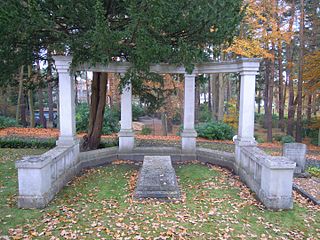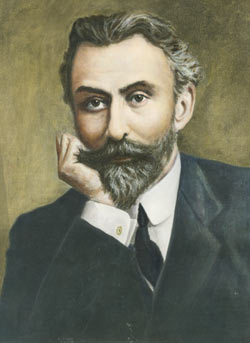Related Research Articles

Gymkhana is a British Raj term which originally referred to a place of assembly. The meaning then altered to denote a place where skill-based contests were held. "Gymkhana" is an Anglo-Indian expression, which is derived from the Persian word "Jamat-khana". Most gymkhanas have a Gymkhana Club associated with them, a term coined during the British Raj for gentlemen's club.

The Indian Army during British rule, also referred to as the British Indian Army, was the main military force of the British Indian Empire until 1947. It was responsible for the defence of both British India and the princely states, which could also have their own armies. As quoted in the Imperial Gazetteer of India, "The British Government has undertaken to protect the dominions of the Native princes from invasion and even from rebellion within: its army is organized for the defence not merely of British India, but of all possessions under the suzerainty of the King-Emperor." The Indian Army was an important part of the forces of the British Empire, in India and abroad, particularly during the First World War and the Second World War.

Colonel George Robert Canning Harris, 4th Baron Harris,, generally known as Lord Harris, was a British colonial administrator and Governor of Bombay, best known for developing cricket administration via Marylebone Cricket Club (MCC).

Rackets or racquets is an indoor racket sport played in the United Kingdom, United States, and Canada. It is infrequently called "hard rackets" to distinguish it from the related sport of squash.
The Bombay Tournament was an annual cricket competition held in British India between 1892 and 1946. Until 1936, matches were played on either the Gymkhana Ground in Bombay or the Deccan Gymkhana Ground in Poona, and then at the Brabourne Stadium in Bombay until the tournament was terminated in 1946. The tournament was known variously as the Bombay Presidency Match, Bombay Triangular, Bombay Quadrangular, and Bombay Pentangular, depending on the number of competing teams.

Nawanagar was an Indian princely state in the historical Halar region, located on the southern shores of the Gulf of Kutch. It was ruled by the Jadeja Rajput dynasty and became the part of newly formed India. Its capital city was Nawanagar city, now known as Jamnagar. It had an area of 3,791 square miles (9,820 km2) and a population estimated at 336,779 in 1901. Its rulers, who use the title of "Jam Saheb" are of the same clan as the Rao of Kutch. They were entitled to a 13-gun salute. The state flag was a rectangular red flag with a white elephant, near and facing the hoist. During the British, the state was part of the Kathiawar Agency, within the Gujarat Division of Bombay Presidency.

The provinces of India, earlier presidencies of British India and still earlier, presidency towns, were the administrative divisions of British governance on the Indian subcontinent. Collectively, they have been called British India. In one form or another, they existed between 1612 and 1947, conventionally divided into three historical periods:

Sir Dorabji Tata was an Indian industrialist of the British Raj, and a key figure in the history and development of the Tata Group. He was knighted in 1910 for his contributions to industry in British India.

The Imperial Legislative Council (ILC) was the legislature of British India from 1861 to 1947. It was established under the Charter Act of 1853 by providing for the addition of 6 additional members to the Governor General Council for legislative purposes. Thus, the act separated the legislative and executive functions of the council and it was this body within the Governor General's Council which came to known as the Indian/Central Legislative Council. In 1861 it was renamed as Imperial Legislative Council and the strength was increased.

Cecil Halliday Abercrombie was a Scottish international rugby union player, first-class cricketer, and an officer in the Royal Navy. Abercrombie passed out from the Britannia Royal Naval College into the Royal Navy in 1902, and shortly thereafter he served abord HMS Hyacinth in the British campaign in Somaliland, being part of the force that captured "Mullah" Hassan's stronghold in 1904. He would later served aboard HMS Defence at the Battle of Jutland on 31 May 1916, during which he was killed in action.
William Henry Macleod Read was an active participant in the commercial, political and social life of Singapore and the Malay states between 1841 and 1887.

Sir Nowroji Saklatwala, was an Indian businessman who was the third chairman of the Tata Group from 1932 till his sudden death in 1938.

Sir Ratanji Jamsetji Tata was an Indian financier and philanthropist during the British Raj.

Jamsetji Nusserwanji Tata was an Indian pioneer industrialist who founded the Tata Group, India's biggest conglomerate company. Named the greatest philanthropist of the century by several polls and ranking lists, he also established the city of Jamshedpur.

Charles Williams (1888-1935) was English rackets world champion.
Brigadier-General Henry Hendley Bond was an Irish first-class cricketer and British Army general. He came from a military family – his father was Major-General Henry Bond – and attended the Royal Military Academy, Woolwich. He was commissioned as an officer in the Royal Artillery and served in India, England, Ireland and during the Second Boer War. During his time in India he played first-class cricket for the Europeans cricket team. He was later a gunnery instructor and a champion racquets player.
With the inception of Company rule in India by the East India Company in 1757, the tradition of giving medals also began. Campaign medals and awards were given to soldiers who fought in the Company's presidency armies. After 1895, with the formation of British Indian Army, soldiers were awarded with gallantry awards alongside Imperial Service Troops of the princely states. Awards were also bestowed upon the personnel of Royal Indian Navy and of Royal Indian Air Force with its incorporation in 1932. Indian Imperial Police were also eligible for the police honours.
The company's powers were removed in 1858 after the Indian Mutiny, and the British Crown assumed direct control of India and monarch took the title of Emperor of India in 1876. During the British Raj, new medals and orders were established and were awarded for the services to the Crown and the Indian Empire by Europeans and Indians of British India and the princely states. After 1914, Indians also became eligible for British Honours. The following is a list of orders, decorations and medals related to British in India:
Percy James Mead was an English first-class cricketer and an officer in the Indian Civil Service in the Bombay Presidency.
References
- 1 2 3 4 "THE RACQUETS CHAMPIONSHIP: Jamsetji of Bombay sails for England". The Straits Times. Singapore. 24 February 1911. p. 7. Retrieved 13 July 2015.
- ↑ McNeill, Ronald (1911). . In Chisholm, Hugh (ed.). Encyclopædia Britannica . Vol. 22 (11th ed.). Cambridge University Press. pp. 780–783.
- ↑ Danzig, Allison (1930). The Racquet Game. Macmillan. pp. 94–5, 244.
- ↑ "Sporting Intelligence: Notes in General". The Straits Times. 27 December 1909. p. 8. Retrieved 13 July 2015.
- 1 2 Kidambi, Prashant (2013). "Sport and the Imperial Bond: The 1911 'All-India' Cricket Tour of Great Britain". The Hague Journal of Diplomacy. 8 (3–4): 261–285: 262. doi:10.1163/1871191X-12341256. ISSN 1871-1901.
- ↑ "The Sporting World; Racquets". The Singapore Free Press and Mercantile Advertiser. 2 June 1911. p. 5. Retrieved 13 July 2015.
- ↑ Majumdar, Boria (2005). Indian Cricket Through the Ages: A Reader. Oxford University Press. p. 62. ISBN 9780195667868.